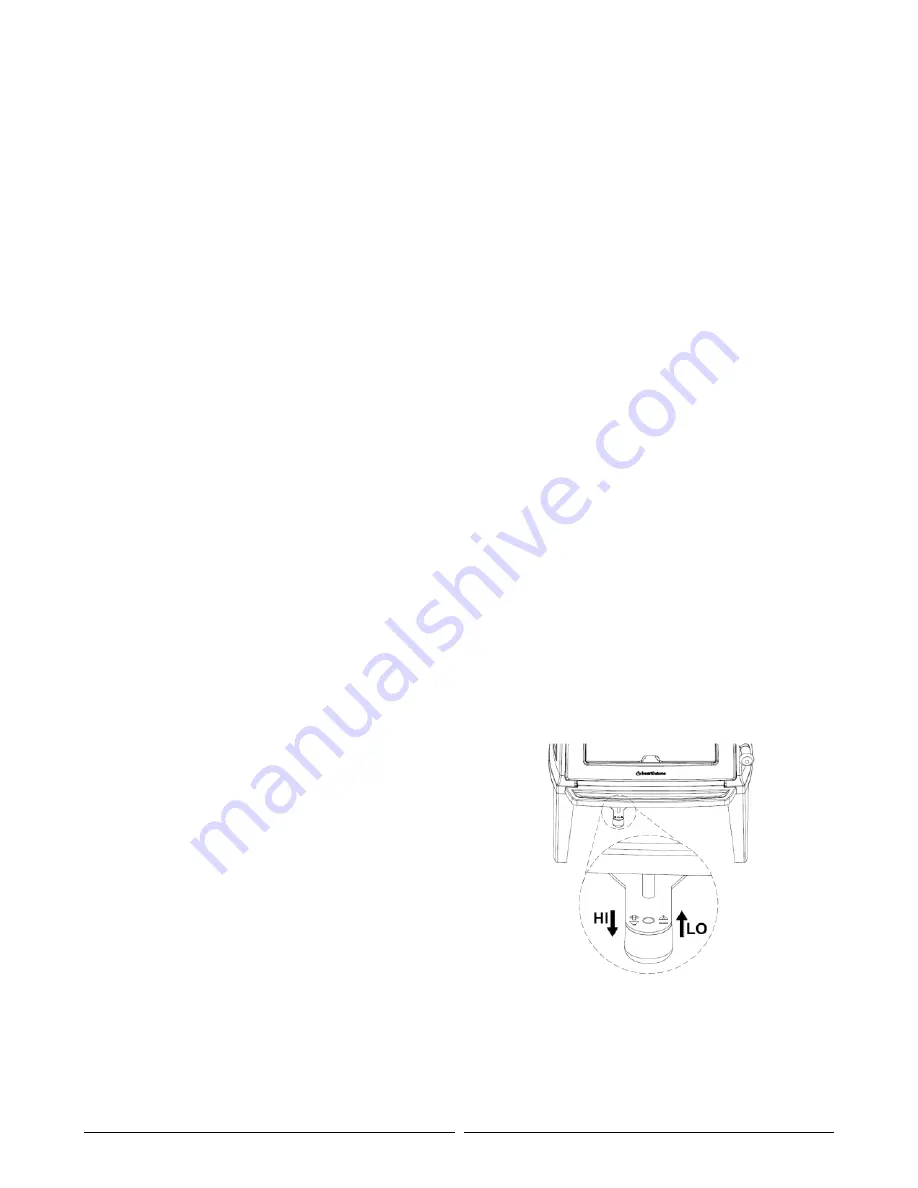
Hearthstone Quality Home Heating Products, Inc
®
Craftsbury (Model 8392)
25
Your first fire and first fire each season thereafter
should be built and maintained as outlined above.
Your patience will be rewarded by a properly
seasoned stove.
•
NOTE: The cool flue gas temperatures
present during the break-in procedure may
cause rapid creosote build-up. The door
glass may also get dirty. A good hot fire will
clean it. We recommend a visual inspection
(and cleaning if necessary) of your stovepipe
and chimney once the break-in procedure is
completed.
N
ORMAL
O
PERATION
B
UILDING
A
F
IRE
F
OR
E
VERYDAY
U
SE
1) Open the bypass handle. Open the front door and
place five or six double sheets of tightly twisted
newspaper in the center of the firebox. Arrange
kindling in a tee-pee configuration over the
newspaper. Use approximately 10 pieces of
kindling, 1/2" (13 mm) in diameter and 10" to 16"
(254 mm to 406 mm) long.
2) Fully open the primary air control by pulling the
lever completely out, away from the firebox.
3) Light the paper under the kindling. Leave the front
door slightly ajar momentarily until the kindling
begins to burn and draft begins to pull.
4) Close the door and allow the fire to burn.
5) Once the kindling is burning, open the front door
and add logs, small at first, to build the fire up.
Ensure you keep the logs away from the glass in
front in order for the air-wash system to work
properly. Keep the front door closed while the
stove is in use.
CAUTION: DO NOT BUILD THE FIRE TOO CLOSE
TO THE GLASS. KEEPING THE FIRE TOWARDS
THE CENTER OF THE FIRE BOX WILL KEEP
COALS FROM BUILDING UP AGAINST THE GLASS
DURING RELOADING.
6) Once the fire is burning well, and the catalyst
thermometer indicates that the stove is in the
active range, close the bypass handle. Now the
combustion products are passing through the
catalytic combustor, and your stove will be
burning at its optimal efficiency.
7) After closing the bypass door, allow the stove to
run on a high setting for around 20 minutes to
ensure the catalytic combustor stays in the active
range. This will also allow the fire to burn off any
residue on the door glass from any previous low-
burn fires
8) Use the primary air control to regulate the desired
rate of burn. Pull the handle towards you for a
higher burn rate, and push the handle towards the
stove for a lower burn rate. The air control does
not close completely.
Note:
Always remember to open the bypass handle
before opening the front door. When opening the front
door to reload or re-arrange logs, it is advisable to
open the door just a crack, pause for a moment then
open the door completely. This procedure allows the
firebox to clear of smoke before the door is open fully.
In addition, reloading on a bed of hot, red coals
reduces smoking time and brings fresh fuel up to a
high temperature rapidly. During the refueling and
rekindling of a cool fire, or a fire that has burned down
to the charcoal phase, operate the stove at a medium
to high firing rate for about 10 minutes to ensure that
the catalysts reach approximately 600 °F. Once the
catalysts reach operating temperature, the bypass
handle can be closed. When reloading the stove, try
to keep an open path behind the Lower Primary Air
Opening (LPAO). It is helpful to leave a small valley
in the coal bed behind the LPAO to insure faster re-
lighting.
C
ATALYTIC
C
OMBUSTOR
O
PERATION
The Craftsbury uses a catalytic combustor to ensure
highly clean and efficient burns. The catalytic
combustor is made from a stainless steel corrugation
that is coated with a catalytic material. The catalytic
combustor becomes active around 500
⁰
F (260
⁰
C),
helping to burn up smoke and any remaining particles
that were not fully burned in the firebox. During the
startup of a cold stove, a medium to high firing rate
Figure 18
– Hi/Lo Air Control
















































